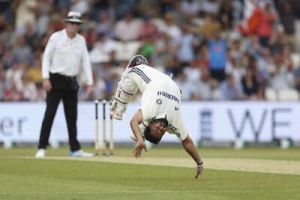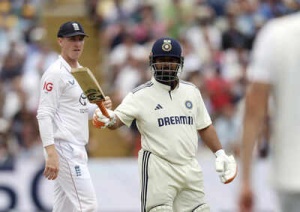The recent, unexpected death of Indian actress Shefali Jariwala has sparked widespread concern and brought attention to a disturbing trend: the rising incidence of sudden cardiac arrest (SCA) in seemingly healthy, middle-aged women. While the official cause of Jariwala's death is pending further investigation, initial reports point to cardiac arrest, prompting a critical examination of this growing health issue.

Sudden cardiac death (SCD), once considered rare among young adults, is now occurring with increasing frequency, particularly in India. Cardiovascular diseases account for approximately 28% of all deaths in the country, with nearly 10% attributed to SCD. A concerning number of these cases involve individuals between 30 and 50 years old.
India's evolving socioeconomic landscape has contributed to this rise, with factors like:
These factors contribute to a surge in hypertension, obesity, diabetes, and coronary artery disease – all major risk factors for SCD. While historically more prevalent in men, recent research highlights the unique risks women face, who often have no prior cardiac diagnoses before experiencing SCD. Structural abnormalities, such as myocardial scarring and ischemic heart disease, frequently go undetected until post-mortem examinations. Furthermore, many women do not exhibit typical warning signs like chest pain or ECG anomalies, making early detection exceptionally challenging.
Women in their 40s and 50s face a significant risk from underlying cardiac conditions. In younger populations, SCD is often linked to inherited or electrical disorders such as:
These conditions may remain asymptomatic until a fatal arrhythmia occurs. In this age group, factors like left ventricular hypertrophy, obesity, and myocardial fibrosis further increase vulnerability.
The progression of myocardial scarring and fibrosis with age can result from cumulative exposure to cardiovascular risks, repeated micro-ischemic events, and hormonal changes, especially during perimenopause. Conditions like Myocardial Infarction with Non-Obstructive Coronary Arteries (MINOCA), more common in younger women, often leave no trace in autopsies, making diagnosis difficult.
It's crucial to acknowledge the role of stress. In Shefali's case, her early career as a teen star was coupled with personal struggles like her divorce, anxiety, depression, and epilepsy - all potentially impacting cardiovascular health. Takutsobo cardiomyopathy (Broken Heart Syndrome), or stress-induced cardiomyopathy, is a major cause of SCD in women who multitask and experience emotional stress. Psychiatric medications, especially those that prolong the QT interval, have also been linked to increased SCD risk.
Despite the severity of the issue, women are often underrepresented in preventive heart care. Symptoms such as fatigue, palpitations, or breathlessness are frequently dismissed or misattributed, delaying critical intervention. Unlike heart attacks, which are caused by blocked arteries, cardiac arrest results from electrical disturbances that cause the heart to stop suddenly. Immediate CPR and defibrillation are often the only lifesaving measures, highlighting the critical need for early risk identification. Medical experts are advocating for targeted public health strategies. This includes improving early screening tools specifically designed for women, particularly during perimenopause when cardiac risks escalate.
Shefali Jariwala's tragic death serves as a stark reminder of an overlooked health crisis. Her passing highlights the urgent need for systemic change in how women's heart health is addressed. While she will be remembered for her captivating performances, she may also become a symbol of awareness, urging immediate attention, investment, and action to address women's cardiac health.
Newer articles
Older articles
 Greg Chappell Hails Rishabh Pant's Revolutionary Impact on Cricket
Greg Chappell Hails Rishabh Pant's Revolutionary Impact on Cricket
 Smith Targets Second Test Return After Baseball Cage Recovery in New York
Smith Targets Second Test Return After Baseball Cage Recovery in New York
 Rishabh Pant's Somersault Celebration Deemed 'Unnecessary' by Doctor Who Oversaw His Recovery From Near-Fatal Crash
Rishabh Pant's Somersault Celebration Deemed 'Unnecessary' by Doctor Who Oversaw His Recovery From Near-Fatal Crash
 Gavaskar Calls for Kuldeep Yadav's Inclusion in 2nd Test Amid Bumrah Fitness Concerns
Gavaskar Calls for Kuldeep Yadav's Inclusion in 2nd Test Amid Bumrah Fitness Concerns
 Rishabh Pant's Composed Reply Dismisses Harry Brook's Sledge in Edgbaston Test: Key Partnership Boosts India
Rishabh Pant's Composed Reply Dismisses Harry Brook's Sledge in Edgbaston Test: Key Partnership Boosts India
 'Manjummel Boys' Star Soubin Shahir Denies Arrest in Film Finance Dispute: Claims of Misleading Accounting Spark Police Probe
'Manjummel Boys' Star Soubin Shahir Denies Arrest in Film Finance Dispute: Claims of Misleading Accounting Spark Police Probe
 Harshit Rana Released: Indian Pacer Exits Squad Before Second England Test in Birmingham
Harshit Rana Released: Indian Pacer Exits Squad Before Second England Test in Birmingham
 Bangladesh Test Captain Najmul Hossain Resigns After Sri Lanka Defeat
Bangladesh Test Captain Najmul Hossain Resigns After Sri Lanka Defeat
 Samsung Unveils Galaxy A35 5G and A55 5G Prices, Availability
Samsung Unveils Galaxy A35 5G and A55 5G Prices, Availability
 Mirabai Chanu: Weightlifting Demands Constant Mental Focus, Even During Family Time
Mirabai Chanu: Weightlifting Demands Constant Mental Focus, Even During Family Time